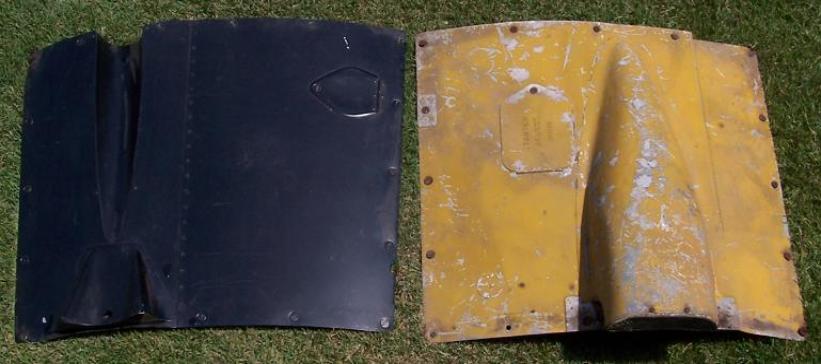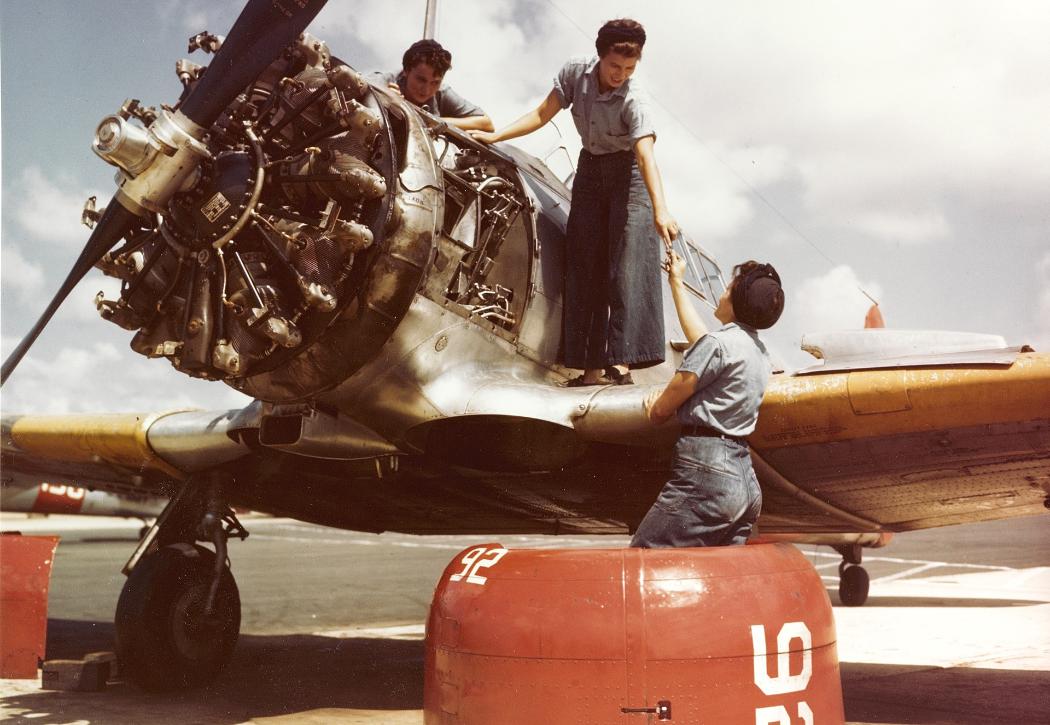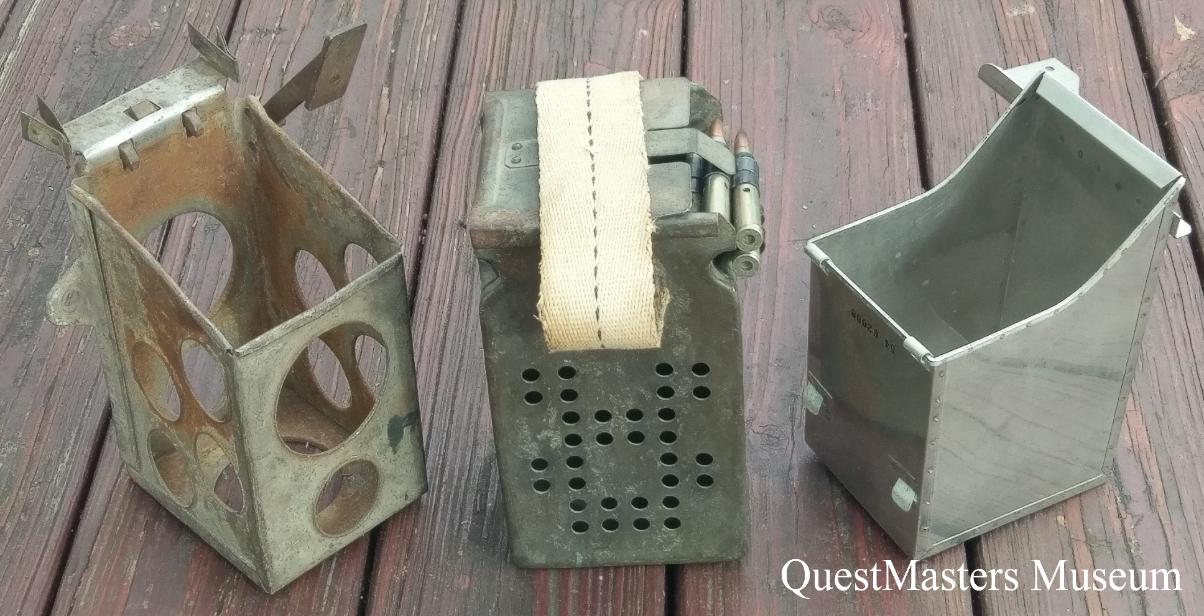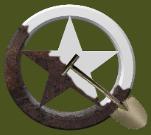| United States Navy North American Aviation SNJ-5B "Texan" Advanced Trainer Navy BuNo: 84947 |

| Port side of SNJ-5B 84947, above photo. The Army Air Force AT-6D "Texan" cockpit section, shown above, was recovered from Tennessee for the restoration of this SNJ. |

| U.S. Army North American T-6G "Texan" / P-40 "Warhawk", Magnum P.I. Television Show, above two photos. In 1996, QuestMasters purchased the remains of a T-6G "Texan" that was used as a prop in the television program "Magnum P. I.". The T-6G was modified to look like a P-40 "Warhawk" that had been shot down during WWII. In 1987, Episode 15, Season 7, "Solo Flight" aired, which featured this aircraft for this episode. The storyline was that Magnum goes on a soul-searching trek after a being terminated from a case he couldn't solve. His trip leads him to the top of a mountain where he spotted an old plane crash from WWII, only to be pinned under the fuselage, leg bleeding, and trying to keep from going delirious when he can't free himself. The T-6G "Texan" / P-40 "Warhawk" hybrid, named "Sleepy Time Gal" would then be sold from the T.V. filming set, and the fuselage section of the T-6G obtained by QuestMasters in 1996. The original data plate is marked: AIRPLANE MOD. T-6G, DWG OR PART NO. 168-31105, CONTR. NO. F-20914, SER. NO. 037- F. The T-6G "Texan" series aircraft was built after WWII from rebuilt wartime produced AT-6's, with upgraded features. This T-6 cockpit was used to rebuild the cockpit section of the 1944 U.S. Navy SNJ-5B BuNo. 84947 in the QuestMasters Museum collection. |


| SNJ center wing section, left photo. The center section is in very good condition, shown here from the bottom, but does have some surface corrosion. The fuel tanks remain in place, but the landing gear have been removed. The original U.S. Navy serial number remains painted on the tail: SNJ-5B 84947, right photo. The original serial number and Navy Training Yellow paint scheme shown here were applied to the aircraft after it was as re-designated as SNJ-5B in March 1955. After years of exposure to the elements, the previous paint schemes that 84947 carried are clearly shown. Under the numbers 849 are the letters U.S. and under the number 7 is the first letter N of the word NAVY. |


| SNJ-5B outer wing sections, minus wing tips, left photo. These wings were found in the same scrapping field as 84847, but may not be from this specific aircraft. The post-1947 "Star and Bars" are painted over the original wartime examples which were exposed due to sunlight fading (note the bottom wing surface closest to the wall showing both insignia). The right wing still contains the .30 caliber machine-gun mount, for gunnery training, and traces of stenciling for practice bomb placement. |


| SNJ three-piece canopy section, left photo. SNJ firewall section, right photo. |


| SNJ pilot's instrument panel, left photo. Co-pilot's instrument panel, right photo. |



| U.S. Army Air Corps seat back cushion, above left photo. The seat back cushion could also be used for flotation. Note early stenciling on cushion front: "U.S. AIR CORPS" New-Old-Stock SNJ/T-6 cockpit windshield assembly, above center photo. Pilot's control stick assembly, above right photo. |


| SNJ starboard Cockpit Skin, left photo. Main Landing Gear Fairing, right photo. |
| SNJ Main Landing Gear, above photo. The starboard side leg is shown on the top and the port side leg is shown on the bottom. Both gear are shown from the rear. |
| United States Navy SNJ-5B BuNo 84947: The North American Aviation NA-88 design was used to build Army Air Force AT-6 and Navy SNJ Advanced Trainer, named "Texan", for the NAA factory in Dallas, Texas, where it was produced. The AT-6D and SNJ-5 was armament capable, and early versions included a wing gun camera, and a high-pressure oxygen systems. The first AT-6D was delivered on July 22nd 1943. The Navy received 630 AT-6Ds directly from the USAAF, redesignating them SNJ-5s, for a total of 1,987 SNJ-5's produced of this model for the United States Navy. This specific SNJ-5B was produced by North American Aviation under contract N.Aer 20000-51, Manufacturer Serial Number 88-16868, Navy Bureau Number 84947, accepted by the United States Navy on July 5th 1944, and delivered July 7th 1944 to NAIT, Naval Air Intermediate Training, Whiting Field, Florida, as SNJ-5 84947. In 1946, SNJ 84947 was transferred to NAAS, Naval Auxiliary Air Station, Ellyson, Florida to be put into storage at Litchfield Park, Arizona, in 1947. From 1952-1954, SNJ 84947 served with NAS NART, Naval Air Station - Naval Air Reserve Training Command, Olathe, Kansas. In 1955, SNJ 84947 was converted to SNJ-5BX at Overhaul and Repair (O&R), Bureau of Aeronautics (BuAer), Maintenance and Supply (M&S), Pensacola, Florida, modified with two 30mm machine guns and a bomb rack mounted below each wing, and finally re-designated SNJ-5B in March 1955. SNJ-5B 84947 served until finally stricken from inventory on June 14th 1958 having flown 5053 hours. SNJ-5B 84947 was not assigned a civil registration number after being purchased for scrap in 1958. QuestMasters Museum obtained this aircraft in 1999 and remains in the museum collection as of January 2021. The above photo shows U.S. Navy WAVES (Women Accepted for Volunteer Emergency Service) mechanics working on a North American SNJ at Naval Auxiliary Air Station Whiting Field, 1944. |

| Starboard side of SNJ-5B 84947, above photo. |


| SNJ engine cowling support "dish pan", left photo. Cowling accessory panels, right photo. |


| SNJ Engine Cowling, above two photos. The starboard side top cowling, left photo, retains the original training yellow paint. The port side top cowling, right photo, has been painted silver and has the number 30 on the side. This cowling is from a different SNJ. Note that both cowling sections retain the anti-reflection paint that was applied to the top, in front of the windshield. QuestMasters is missing the bottom cowling section for the restoration of SNJ-5B 84847. |

| Inside view of the SNJ-5B 84947 tail assembly, left and above photo. When the SNJ was used as a gunnery trainer, the rear cockpit window assembly would be removed to mount a rear firing .30 Caliber AN-M2 Machine Gun. |

| SNJ-5B port side tail assembly, left photo. The port side of the SNJ held four fixed .30 Caliber ammunition boxes holders and one fixed ammunition box holder on the starboard side. Two mild steel boxes and two box brackets remain mounted in the tail of SNJ-5B 84947. Each box could hold 100 rounds of ammunition. Stainless steel .30 Caliber Ammunition Boxes Holders, above photo. These boxes will be used in the restoration of SNJ-5B 84947. |






| U.S. Navy SNJ-5 84866, NAAS Whiting Field Florida 1944, above photo. This aircraft was produced 81 aircraft before SNJ-5B 84947, in the QuestMasters Museum collection, and served at the same airfield in 1944 and 1945. |

| Original WWII Navy MK 41 MOD 1 Practice Bomb, above top photo, WWII Army / Navy M38A2 Practice 100LB Bomb, center of photo, and WWII Navy MK 15-2 100-pound Aircraft Practice Bomb, bottom of photo. These practice bombs were mounted on the SNJ "Texan" when used for aerial bombing practice. |



| SNJ/AT-6 tail-gun AN-M2 .30 caliber machine-gun ring mount, above left photo. Shown here is the ring mount that mounted in the tail of the Army Air Force AT-6 and Navy SNJ "Texan" aircraft, when used as a aerial gunnery trainer. The aluminum ring allowed the gunner to have nearly 180 degree movement of the machine-gun mount. G-5 AN-M2 .30 caliber machine-gun mount carriage, above right photo. The G-5 mount carriage had an internal brake system that was activated with the wooden handle mounted on the bottom. The G-5 held the gun mount or yoke/pintle that held the AN-M2 .30 caliber machine-gun. The example shown here was produced for the Army Air Force under Order No. AC-26967, by The Durd Company, Dayton, Ohio. |
| SNJ/AT-6 tail-gun AN-M2 .30 caliber machine-gun ammunition boxes, above photo. Shown here, is the ammunition box holder that mounted on the side of the gun mount, above left, 100-round .30 caliber aircraft ammunition box, center photo, and the stainless steel .30 Caliber ammunition boxes holder, that mounted in the tail of the aircraft, above right photo. |
